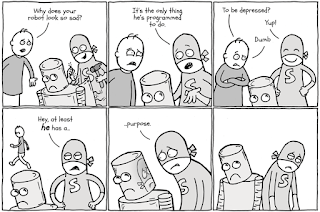Online comics?
but what about flipping the pages?
I've never really been into comics. I grew up reading one chilean comic Condorito de Oro in Peru, but I only read it on the sporadic occasion that my grandmother visited her cousin who owned the comics. Now the only time I really look at them outside of school is when I come across some cool cover art in the store. Looking at online comics however, made me think about how much I actually like the physical copies even though I haven't really been into hem that much to begin with. I know some people don't really like reading on a kindle or tablet because they simply like holding the book and feeling the pages, and I believe I have been an advocate of reading everything on-the-go on my cell phone, but after looking at online comics I see how one could miss holding the thin booklets and looking at the art in person.
I also thought some of the strips like Nicholas Gurewitch's Perry Bible Fellowship and Pat Mallon's Soopah look more like old memes than comics.
Also, one of the things that made me want to major in graphic design, and one of the things I love the most about it is print material. All the little booklets, pamphlets, full-sized books, stationery etc. are something I really enjoy about design. Seeing a design come to life and being able to hold it is something very special and I think that translates into my liking of printed comics over web comics. It just simply isn't the same.

















